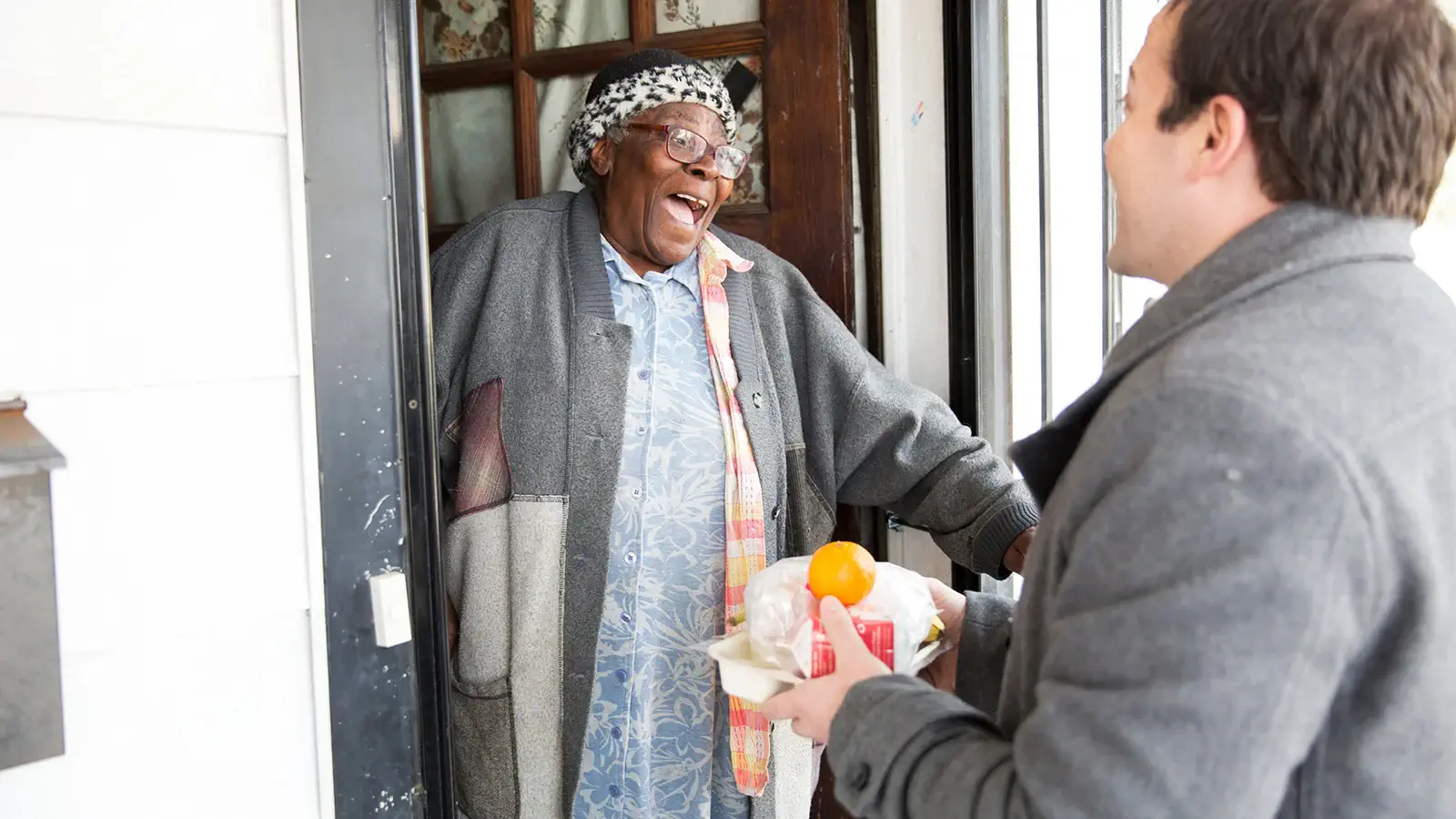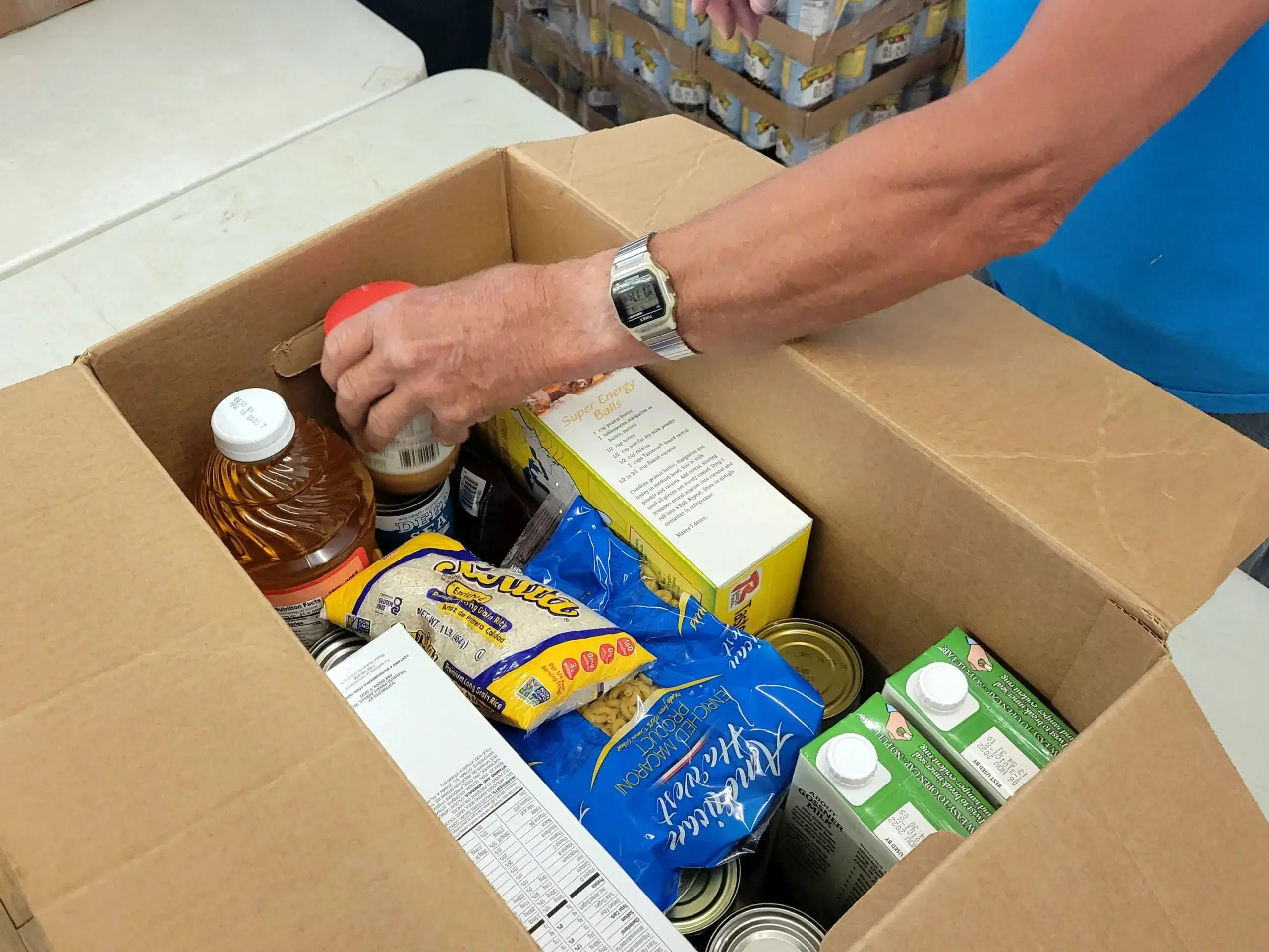
Free Meal Delivery Services for Seniors on a Budget
Growing older often brings new challenges—from managing health conditions to coping with limited income after retirement. One issue many seniors face daily is ensuring they have access to nutritious and affordable meals. Cooking can become difficult due to mobility issues, health problems, or fatigue, while grocery shopping may be physically demanding or financially restrictive. Thankfully, many free meal delivery services for seniors on a budget now exist to bridge this gap, combining nutrition, companionship, and community support in one. In this article from the humanhealthmag website, we intend to examine the importance of meal programs for seniors, government-supported and community-based free meal delivery services.
Importance of Meal Programs for Seniors
Food insecurity among older adults is a growing concern. Rising food prices, medical expenses, and reduced pension income mean thousands of seniors struggle to afford nutritious meals. Poor nutrition can weaken the immune system, worsen chronic diseases like diabetes or hypertension, and increase hospital visits. Feeling too tired or isolated to cook can also lead to low appetite and depression.
This is where free meal delivery services for seniors on a budget play a crucial role. By ensuring consistent access to healthy meals, these programs support both physical and emotional well-being. Families and caregivers also gain peace of mind knowing their loved ones are cared for.
When seniors maintain adequate nutrition, communities benefit too. Proper diet reduces healthcare costs, decreases emergency hospital visits, and enhances the quality of life for older adults. Volunteers gain fulfillment, neighborhood networks strengthen, and societal empathy deepens. Programs that provide free meal delivery services for seniors on a budget are investments in public health, social solidarity, and basic human dignity.
Families benefit as well. Knowing their loved ones receive regular, healthy meals offers peace of mind. Caregivers can schedule around deliveries, ensuring consistent nutrition without daily cooking or shopping stress. Encouraging open communication keeps seniors engaged in choosing their meals and feeling independent.
The Social and Emotional Impact of Free Meal Delivery Services for Seniors on a Budget
Beyond nutrition, these services fight one of the most serious problems facing older adults— loneliness in elderly. Many seniors live alone and go days without conversation. When volunteers deliver meals, they also bring a smile, a few kind words, and a sense of connection. Studies show that social interaction improves mood, reduces depression, and enhances cognitive health in older adults. Some programs even organize virtual gatherings or phone check-ins, turning mealtime into an opportunity for companion care for elderly living alone.
What Are Free Meal Delivery Services for Seniors?
Free meal delivery services for seniors on a budget are community or government-supported programs that provide nutritious ready-to-eat meals or groceries delivered directly to seniors’ homes. These services are often funded by donations, federal nutrition programs, or local agencies. Some focus on fully cooked meals, while others send meal kits or grocery boxes. The goals of these programs are simple:
- Ensure seniors meet basic nutrition needs
- Reduce isolation through regular social contact with volunteer drivers
- Provide support for those unable to cook or shop
- Adjust meals to individual dietary requirements
- Many programs also offer flexible pricing based on income, so seniors with limited resources can still receive food at low or no cost.

Government-Supported Free Meal Delivery Services for Seniors on a Budget
Some government-supported free meal delivery services for seniors on a budget include:
- Meals on Wheels America
Meals on Wheels is one of the best-known free meal delivery services for seniors on a budget. It operates through thousands of community-based organizations nationwide. Meals are cooked locally and delivered directly to seniors’ doors by volunteers who also provide brief social visits. Key features:
- Nutritious meals designed by dietitians
- Sliding-scale fees or completely free options for low-income seniors
- Daily or weekly deliveries, depending on location
- Friendly check-ins that combat loneliness
Beyond nutrition, Meals on Wheels is a lifeline for many homebound seniors, offering human connection and safety checks. I your opinion what is disadvantages of meals on wheels for seniors?
- Senior Farmers’ Market Nutrition Program (SFMNP)
This federal program gives eligible seniors vouchers to purchase fresh fruits, vegetables, and herbs from farmers’ markets. Senior farmers’ market nutrition program helps older adults stick to healthy diets while supporting local agriculture. To qualify, recipients usually need to be at least 60 years old and meet income limits. Seniors can enjoy seasonal produce and the satisfaction of choosing their own items.
- Commodity Supplemental Food Program (CSFP)
The CSFP operates in partnership with the U.S. Department of Agriculture (USDA). It distributes monthly food packages filled with nutritious staples such as canned vegetables, cereals, milk, and proteins. While not a cooked meal delivery program, it significantly reduces grocery costs for seniors and helps maintain dietary balance.
Community-Based Free Meal Delivery Services for Seniors on a Budget
Apart from government-sponsored options, numerous charities and local community centers organize free or low-cost meal deliveries for older adults. These community-led initiatives demonstrate that generosity and local cooperation can create major change for vulnerable populations.
- Local Churches and Faith Groups
Many religious organizations run free food delivery services for seniors on a budget. Volunteers cook and deliver home-style meals to older adults within their neighborhoods. These programs are often flexible and personal, offering comforting, culturally familiar food with genuine care.
- Community Food Pantries with Delivery
Some food banks now include delivery programs for seniors who cannot visit donation centers in person. These free deliveries typically include shelf-stable items, fresh produce, and sometimes frozen entrees. Regional chapters of organizations like Feeding America manage such operations through local partnerships. Do you know where can you donate adult diapers?
- Nonprofit and Volunteer Programs
Groups like Project Angel Heart, God’s Love We Deliver, and local senior resource centers provide nutrition-focused home deliveries, often tailored for seniors with specific medical conditions such as cancer, heart disease, or mobility challenges. There are many volunteer opportunities for retired seniors in Europe also work in the health field.
Affordable Meal Kit and Grocery Options
Although not fully free, some organizations and companies offer discounts and subsidies to make meal deliveries more affordable for seniors. Combining these affordable options with community meal programs can dramatically reduce food expenses for seniors on limited budgets.
- Silver Cuisine by BistroMD: Offers discounted meals designed for older adults, focusing on heart health, diabetes-friendly, and low-sodium menus.
- Mom’s Meals: Works with Medicaid, Medicare Advantage plans, and Area Agencies on Aging to deliver no-cost or low-cost meals to qualifying seniors.
- Home-Delivered Groceries Programs: Some cities have local grocery delivery services that waive fees for seniors enrolled in support programs or living below certain income thresholds.

How to Apply for Free Meal Delivery Programs
Applying for free meal delivery services for seniors on a budget is usually straightforward. Staying in touch with program coordinators ensures smooth delivery, especially during extreme weather or holiday seasons. Here’s a general step-by-step guide:
- Determine Eligibility: Most programs require participants to be at least 60 years old and have limited income or physical mobility issues.
- Find Local Programs: Contact your local Area Agency on Aging (AAA). They can connect you with meal assistance programs available in your county.
- Submit Required Documents: Typically, you’ll need proof of age, residence, and financial need (e.g., Social Security or pension statements).
- Select Meal Preferences: Many programs allow seniors to choose between daily hot meals or frozen weekly deliveries, sometimes with dietary adaptations.
- Schedule Delivery: Once approved, deliveries begin regularly. Volunteers often confirm schedules by phone or in person.
Special Diet Considerations
Good nutrition looks different for every senior. Some have to manage conditions like diabetes, kidney disease, or high blood pressure. Having access to nutritious food that aligns with medical advice helps prevent hospital readmissions and supports independent living at home. Free meal delivery services for seniors on a budget often accommodate these needs with medically tailored menus. Examples include:
- Low-sodium meals for heart health
- Low-sodium diet plan for elderly with high blood pressure
- Gluten free diet for seniors or diabetic-friendly option
- Easy soft food recipes for seniors with no teeth vegetarian, soft-texture, or pureed meals for those with chewing difficulties
Funding and Community Involvement
To sustain free meal delivery services for seniors on a budget, communities rely on both public funding and private generosity. Donations from individuals, local businesses, and charitable foundations make a tremendous difference. A strong network of volunteers and local sponsors ensures that seniors can continue receiving nutritious meals even when economic challenges arise. Ways to support these initiatives include:
- Volunteering as a driver or cook
- Donating ingredients or funds
- Spreading awareness among neighbors who might benefit or wish to contribute
Technology and Innovation in Senior Nutrition
Modern technology now enhances how free meal delivery services operate. Online platforms help organizations coordinate deliveries efficiently, track nutritional intake, and ensure no senior gets overlooked.
Best apps for elderly care connected to wearable health devices can even alert caregivers or services if a senior skips meals persistently, allowing quick intervention. Some cities pilot robotic or electric vehicle-based delivery systems, extending service areas with lower emissions and faster routes. These innovations show a promising future where technology and compassion merge to serve aging populations better. New technology is helping organizations manage deliveries and reduce costs:
- GPS routing to optimize delivery times
- Digital platforms to track dietary needs and feedback
- Health-monitoring integrations for seniors with medical alerts
- Some programs also partner with ride-share companies to reach rural or hard-to-access homes, ensuring that geography no longer limits care.

Overcoming Barriers and Challenges of Free Food Delivery Services for Seniors on a Budget
While meal delivery programs are invaluable, several barriers still exist:
- Limited funding can restrict coverage to certain zip codes
- Transportation difficulties may affect rural areas
- Some seniors may hesitate to sign up due to pride or lack of awareness
- Improving public outreach, securing consistent funding, and collaborating with healthcare providers can widen access. Encouraging seniors that seeking assistance is a form of independence—not dependence—can also reduce stigma.
How Families Can Help
Can families or caregivers apply on behalf of seniors? Absolutely. Family members, friends, or caregivers can complete applications, help manage scheduling, and coordinate dietary preferences for seniors who may have difficulty doing it themselves. Relatives play an essential role in ensuring seniors access meal programs. Family members can:
- Research and apply for programs online on behalf of their loved ones
- Coordinate deliveries around medical appointments or physical therapy schedules
- Supplement delivered meals with occasional home-cooked dishes or shared dinners
- Encourage regular hydration and balanced nutrition
- Empathy and communication strengthen family bonds, ensuring seniors feel supported emotionally as well as physically
Concluding Remarks
Access to good food is a human necessity, not a luxury. For seniors living on small pensions or struggling with physical limitations, free meal delivery services for seniors on a budget offer more than nutrition—they bring independence, comfort, and companionship.
Government programs, nonprofits, and local volunteers together create a safety net that helps millions of older adults enjoy their later years with dignity. As living costs rise, these services become vital in ensuring no senior goes hungry or feels forgotten. Whether contributing time, funds, or simply spreading awareness, every effort supports a future where aging with grace and good health is truly possible for everyone.
We’ve shared our thoughts and now it’s YOUR turn! Please share your insights in the comments, and let’s start a meaningful discussion that will help others, too!

Frequently Asked Questions
How do I know if I qualify for free meal delivery services?
Eligibility usually depends on age (typically 60 and older) and financial need. Some programs also prioritize homebound or mobility-limited seniors. Contact your local Area Agency on Aging for specific guidelines.
Are meals really free, or do I have to pay something?
Many programs are entirely free, but others operate on a sliding-scale fee based on income. No one is refused service due to inability to pay.
Can special diets be accommodated?
Yes. Many organizations offer diabetic-friendly, low-sodium, vegetarian, or pureed meal options, often designed by nutritionists or medical experts.
How often can meals be delivered?
Frequency varies by program. Some deliver hot meals daily, while others drop off frozen weekly servings or monthly food boxes.
What if I live in a rural area?
Even if you’re far from a city, some counties have volunteer-based or church-run programs that deliver meals regionally. Meals on Wheels and local food banks often expand coverage through partnerships.
